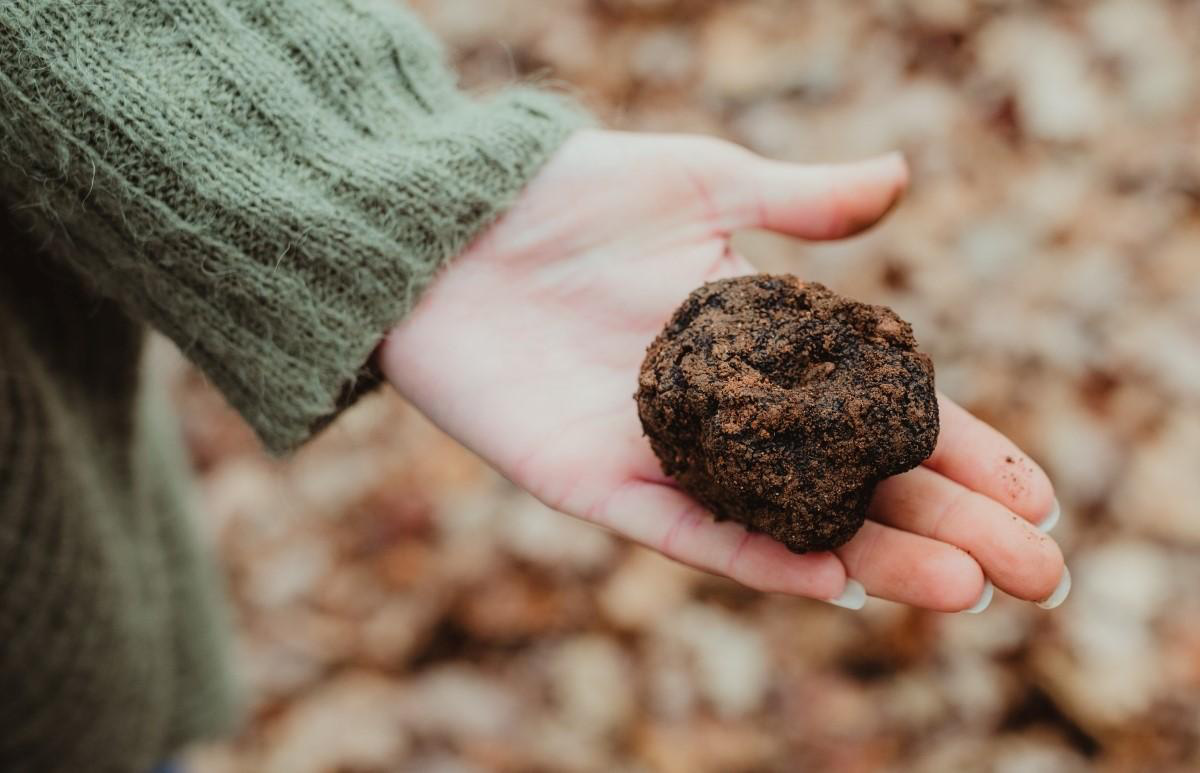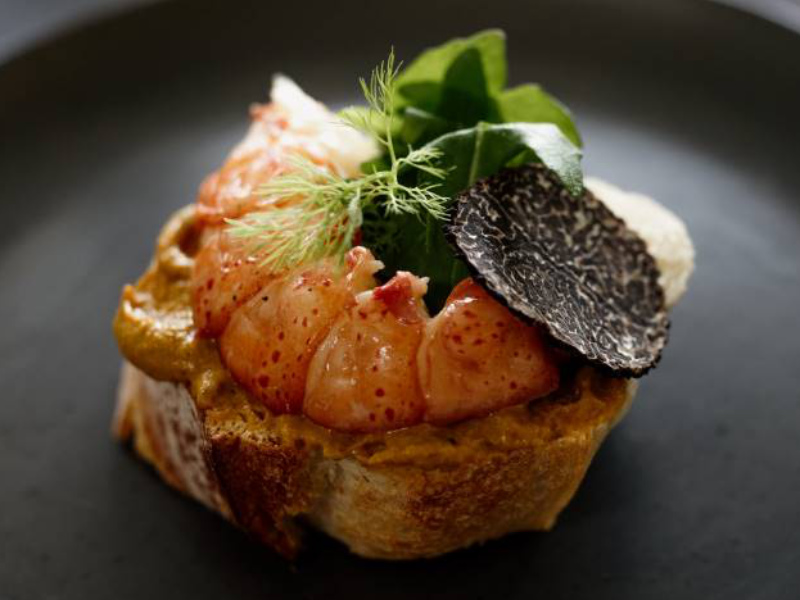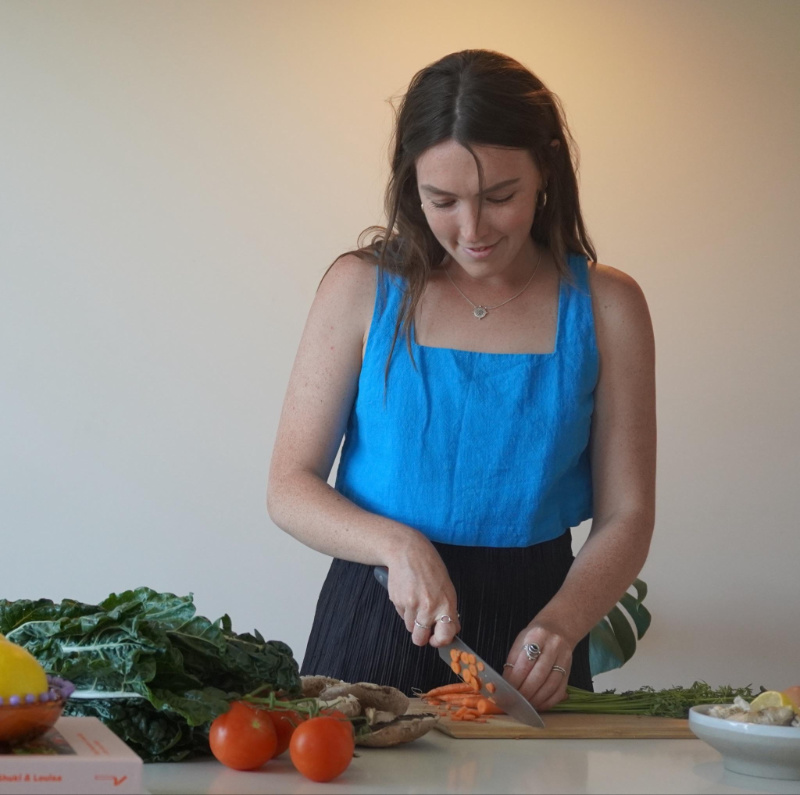How Are Truffles Grown - And What Makes Them So special?
Acclaimed as diamonds in the culinary world, just a few shavings gives a dish a luxurious upgrade. But why are truffles considered such a prized culinary ingredient? What makes them so special? How do you eat such culinary delicacies and are there any nutritional benefits to consuming them? Keep reading to find out how truffles are grown - and what makes them so special!
What are truffles?
Truffles are a type of sought-after edible fungi, known for their distinctive aroma and flavour. Truffles grow underground in a symbiotic relationship with the roots of certain trees, particularly oak, hazelnut and chestnut. Unlike plants that are able to convert sunlight into energy in a process called photosynthesis, truffles are instead totally dependent on these trees to carry out this process for them. The truffle fungi provides nutrients and moisture in return for the photosynthesized sugars.


How are truffles grown?
Truffle cultivation is a very complex and delicate process that can take many years to yield significant truffle production.
The success of truffle farming depends on various factors, including the truffle species being cultivated, the soil and climate conditions, and the expertise of the truffle farmer.
Truffles need to be recovered from under the soil and traditionally, this was done with help from pigs.
Female pigs are attracted to the scent of truffles because truffles contain the pheromone ‘androstanol’ - a sex hormone also found in the saliva of male pigs.
Today many farmers opt to use dogs to forage for truffles as dogs are far easier to train in truffle foraging and are happy to settle for an alternative treat rather than the truffle itself.
What makes truffles so special?
Truffles are rare and not easily found. They grow underground, making them challenging to locate and harvest.
Additionally, truffles have specific soil and climatic requirements, further limiting their cultivation to certain regions.
The combination of their natural scarcity, cultivation challenges and high demand contributes to their exclusivity and elevated status.
Additionally, truffles are incredibly versatile in the culinary world.
They can be used in a wide range of dishes, from pasta and risotto to sauces, oils, and even desserts.
Truffles can elevate a simple dish to a gourmet experience, enhancing the overall taste and providing a luxurious touch.
What do Truffles taste like?
Truffles are highly regarded and prized for their unique flavour.
The taste of truffles can be described as earthy, rich, and intensely aromatic.
They have a distinct and pungent aroma that is often likened to a combination of garlic, onions, and musk.
This powerful fragrance carries over to their nutty flavour.
Many factors can influence the individual taste of a truffle.
The tree roots which truffles attach themselves to during growth, the soil truffles grow in, the climate, and the region the truffles come from all affect their flavour.
When consumed, truffles provide an earthy and savory taste that is difficult to compare to anything else.
Some people describe it as slightly nutty or mushroom-like, while others find it more similar to the taste of earth or forest floor.
Truffles are much like fine wine or cheese, and the more you try them, the more you begin to understand their nearly indescribable flavour.
Here's what a nutritionist wants you to know
Truffles are primarily valued for their flavour and culinary uses rather than their nutritional content however, recent studies have identified diverse bioactive compounds such as phenolics, flavonoids, and polysaccharides in truffles and revealed their potential as potent antioxidant, antimicrobial, anti-inflammatory and antidiabetic agents.
Truffle consumption dates back thousands of years where the Greeks and Romans once used them for therapeutic purposes, feeling that they gave eternal health to the body and soul.
Truffles are low in calories, with an average of about 40 calories per 100g.
They provide small amounts of carbohydrates and protein and are also a good source of dietary fiber, which aids in digestion and promotes satiety.
Truffles also contain vitamin C, which is an antioxidant that supports the immune system, small amounts of vitamins B2 (riboflavin), B3 (niacin), and B9 (folate).
The antioxidant level of truffles is particularly high, helping to protect against cellular damage caused by free radicals.
It's important to note that the nutritional composition of truffles can vary depending on the species, growing conditions, and maturity of the truffle.
Also, the relatively small serving size and the fact that truffles are typically used in small quantities for flavour means that their nutritional impact on a meal is generally quite minimal.
Truffles should be enjoyed for their unique taste and culinary experience but it’s nice to know that such a delicacy may provide you with various potent antioxidants, vitamins and minerals.
How to use truffles in cooking


One of the most popular ways to use truffles is by shaving or grating them directly onto steamy finished dishes.
Truffles are often used to garnish pasta, risotto, scrambled eggs, seafood, or even simple dishes like mashed potatoes.
The steam from the hot food helps to delicately release the aroma from the thin shavings of truffle into the entire dish.
Cooking with high heat should be avoided as the truffle aroma is very delicate and often destroyed by this process.
Foods with rich, acidic flavours should also be avoided.
Truffles are best when paired with creamy, fatty flavours where the taste can truly be celebrated.
Recipes by The Margaret River Truffle Farm
Conclusion
Truffles are one of the oldest known Fungi, with the first truffle consumption dating back to 4100 B.C where the Sumerians first wrote of the ancient Egyptians enjoying truffles. They are also one of the most highly sought after and valued foods in the world. They pack a flavour like no other and add a touch of luxury to any dish whilst providing our bodies with fibre, protein, antioxidants, amino acids, vitamins and minerals.
About the Author


Mandy is a qualified nutritionist (BSc), passionate about food and exploring how diet impacts physical and mental health.
She believes that through proper nourishment and mindfulness, we can all live life in a more meaningful way.
Mandy advocates that health should be both accessible and flexible.
We don't need every single latest superfood or supplement on the market - we just need real, nourishing food.
For more nourishing recipes to inspire you in the kitchen, check out Mandy’s eBook: ‘Real Food’ for over 30 nutritionist-approved, easy, and delicious recipes.
30% off your eBook
Use the code ‘TRUFFLE’ to receive 30% off your eBook purchase.
References
Published: June 04, 2023
How Are Truffles Grown - And What Makes Them So special?
Acclaimed as diamonds in the culinary world, just a few shavings gives a dish a luxurious upgrade. But why are truffles considered such a prized culinary ingredient? What makes them so special? How do you eat such culinary delicacies and are there any nutritional benefits to consuming them? Keep reading to find out how truffles are grown - and what makes them so special!
What are Truffles?
Truffles are a type of sought-after edible fungi, known for their distinctive aroma and flavour. Truffles grow underground in a symbiotic relationship with the roots of certain trees, particularly oak, hazelnut and chestnut. Unlike plants that are able to convert sunlight into energy in a process called photosynthesis, truffles are instead totally dependent on these trees to carry out this process for them. The truffle fungi provides nutrients and moisture in return for the photosynthesized sugars.

How are truffles grown?
Truffle cultivation is a very complex and delicate process that can take many years to yield significant truffle production.
The success of truffle farming depends on various factors, including the truffle species being cultivated, the soil and climate conditions, and the expertise of the truffle farmer.
Truffles need to be recovered from under the soil and traditionally, this was done with help from pigs. Female pigs are attracted to the scent of truffles because truffles contain the pheromone ‘androstanol’ - a sex hormone also found in the saliva of male pigs.
Today many farmers opt to use dogs to forage for truffles as dogs are far easier to train in truffle foraging and are happy to settle for an alternative treat rather than the truffle itself.
What makes truffles so special?
Truffles are rare and not easily found.
They grow underground, making them challenging to locate and harvest.
Additionally, truffles have specific soil and climatic requirements, further limiting their cultivation to certain regions.
The combination of their natural scarcity, cultivation challenges and high demand contributes to their exclusivity and elevated status.
Additionally, truffles are incredibly versatile in the culinary world.
They can be used in a wide range of dishes, from pasta and risotto to sauces, oils, and even desserts.
Truffles can elevate a simple dish to a gourmet experience, enhancing the overall taste and providing a luxurious touch.
What do Truffles taste like?
Truffles are highly regarded and prized for their unique flavour.
The taste of truffles can be described as earthy, rich, and intensely aromatic.
They have a distinct and pungent aroma that is often likened to a combination of garlic, onions, and musk.
This powerful fragrance carries over to their nutty flavour.
Many factors can influence the individual taste of a truffle.
The tree roots which truffles attach themselves to during growth, the soil truffles grow in, the climate, and the region the truffles come from all affect their flavour.
When consumed, truffles provide an earthy and savory taste that is difficult to compare to anything else.
Some people describe it as slightly nutty or mushroom-like, while others find it more similar to the taste of earth or forest floor.
Truffles are much like fine wine or cheese, and the more you try them, the more you begin to understand their nearly indescribable flavour.
Here's what a nutritionist wants you to know
Truffles are primarily valued for their flavour and culinary uses rather than their nutritional content however, recent studies have identified diverse bioactive compounds such as phenolics, flavonoids, and polysaccharides in truffles and revealed their potential as potent antioxidant, antimicrobial, anti-inflammatory and antidiabetic agents.
Truffle consumption dates back thousands of years where the Greeks and Romans once used them for therapeutic purposes, feeling that they gave eternal health to the body and soul.
Truffles are low in calories, with an average of about 40 calories per 100g. They provide small amounts of carbohydrates and protein and are also a good source of dietary fiber, which aids in digestion and promotes satiety.
Truffles also contain vitamin C, which is an antioxidant that supports the immune system, small amounts of vitamins B2 (riboflavin), B3 (niacin), and B9 (folate).
The antioxidant level of truffles is particularly high, helping to protect against cellular damage caused by free radicals.
It's important to note that the nutritional composition of truffles can vary depending on the species, growing conditions, and maturity of the truffle.
Also, the relatively small serving size and the fact that truffles are typically used in small quantities for flavour means that their nutritional impact on a meal is generally quite minimal.
Truffles should be enjoyed for their unique taste and culinary experience but it’s nice to know that such a delicacy may provide you with various potent antioxidants, vitamins and minerals.
How to use truffles in cooking

One of the most popular ways to use truffles is by shaving or grating them directly onto steamy finished dishes.
Truffles are often used to garnish pasta, risotto, scrambled eggs, seafood, or even simple dishes like mashed potatoes.
The steam from the hot food helps to delicately release the aroma from the thin shavings of truffle into the entire dish.
Cooking with high heat should be avoided as the truffle aroma is very delicate and often destroyed by this process.
Foods with rich, acidic flavours should also be avoided.
Truffles are best when paired with creamy, fatty flavours where the taste can truly be celebrated.
Conclusion
Truffles are one of the oldest known Fungi, with the first truffle consumption dating back to 4100 B.C where the Sumerians first wrote of the ancient Egyptians enjoying truffles. They are also one of the most highly sought after and valued foods in the world. They pack a flavour like no other and add a touch of luxury to any dish whilst providing our bodies with fibre, protein, antioxidants, amino acids, vitamins and minerals.
About the Author
Mandy is a qualified nutritionist (BSc), passionate about food and exploring how diet impacts physical and mental health.
She believes that through proper nourishment and mindfulness, we can all live life in a more meaningful way.
Mandy advocates that health should be both accessible and flexible. We don't need every single latest superfood or supplement on the market - we just need real, nourishing food.
For more nourishing recipes to inspire you in the kitchen, check out Mandy’s eBook: ‘Real Food’ for over 30 nutritionist-approved, easy, and delicious recipes.
30% off your eBook
Use the code ‘TRUFFLE’ to receive 30% off your eBook purchase.
References
Published: June 04, 2023